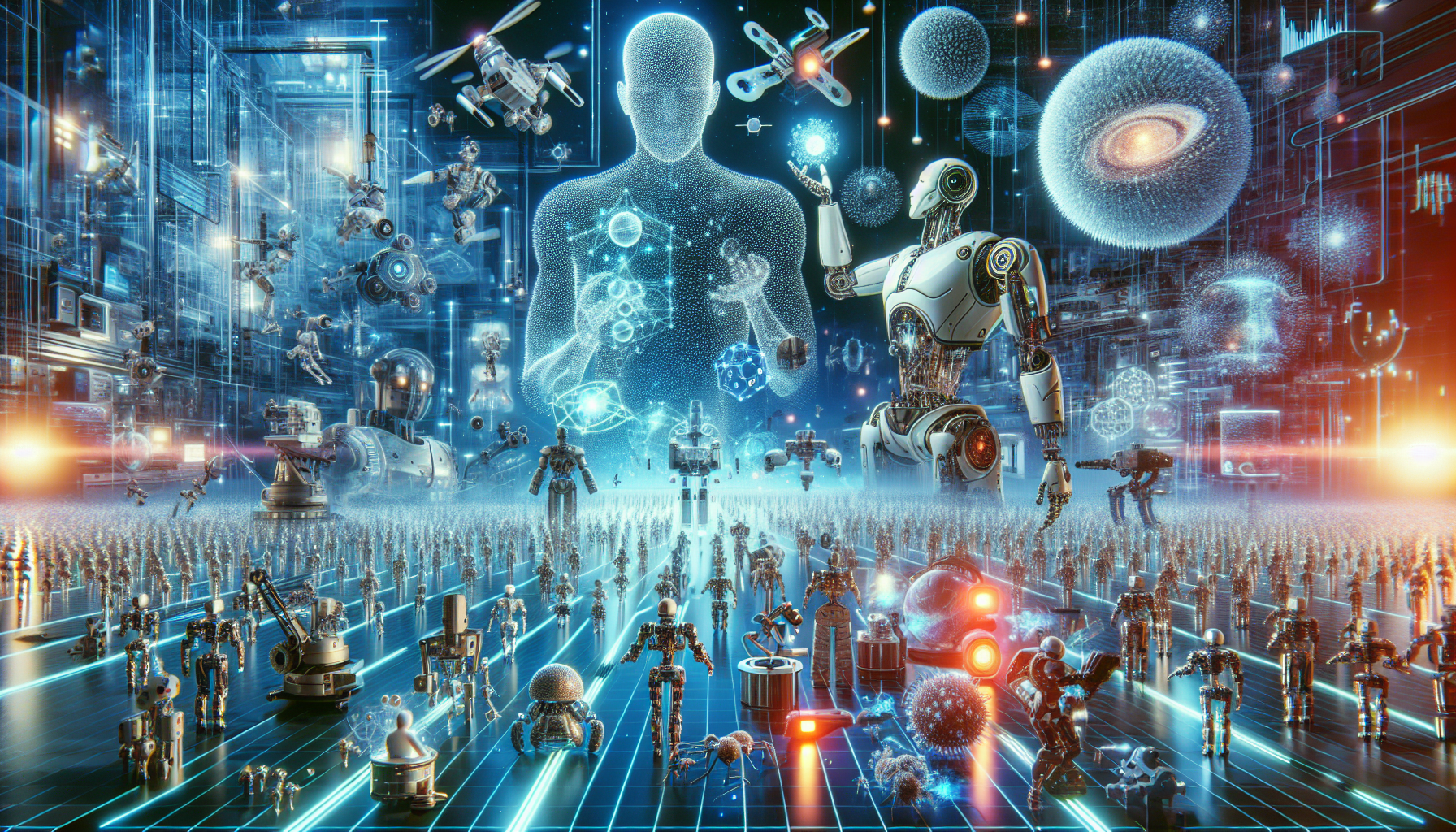Understanding Next-Gen Robots
The Evolution of Robotics
Over the years, robotics has undergone a dramatic transformation. From early mechanical devices that performed simple tasks to today’s sophisticated robots equipped with artificial intelligence, the landscape of robotics has significantly advanced. Next-gen robots are now capable of performing intricate tasks, learning from their environment, and even interacting with humans in meaningful ways.
Key Features of Next-Gen Robots
Next-gen robots come packed with features that allow them to excel in various fields. These features include:
Advanced Artificial Intelligence
Most next-gen robots leverage machine learning algorithms to enhance their intelligence. This enables them to process vast amounts of data, recognize patterns, and adapt their behavior based on real-time information. By employing AI, robots can now perform complex tasks that were once thought to be exclusively human.
Enhanced Mobility
In contrast to their predecessors, modern robots exhibit unprecedented agility. Whether climbing stairs, traversing uneven terrain, or navigating through crowded environments, these robots utilize advanced sensors and mobility technology. This enhanced mobility is particularly beneficial in disaster recovery scenarios or search-and-rescue missions.
Improved Human-Robot Interaction
Next-gen robots are designed to engage with humans more naturally than ever before. With developments in natural language processing and emotional AI, they can understand human language, respond to queries, and even recognize emotions. Such capabilities are paving the way for collaborative robots, or cobots, that can work alongside humans in various settings.
Applications of Next-Gen Robots
The diverse applications of next-gen robots are staggering, and they are impacting numerous industries.
Healthcare Robotics
One of the most exciting areas of development is in healthcare. Next-gen robots are being utilized for a range of applications, including:
Surgical Assistance
Robotic surgical systems have transformed the landscape of minimally invasive surgeries. These robots provide surgeons with enhanced precision and control, resulting in fewer complications and quicker recovery times for patients. Notable systems like the da Vinci Surgical System exemplify how robotics is enhancing surgical practices.
Rehabilitation
Robots are proving to be valuable in physical rehabilitation. Robotic exoskeletons are assisting patients recovering from injuries or surgeries by providing support and enhancing mobility during therapy sessions. These devices not only help patients regain strength but also offer motivational feedback, improving patient engagement in their recovery process.
Industrial Automation
Next-gen robots are revolutionizing the manufacturing industry. Their capabilities lead to increased efficiency and reduced costs in production processes. Various aspects include:
Smart Factories
The concept of the smart factory integrates robotics, IoT (Internet of Things), and big data to create intelligent manufacturing systems. Robots equipped with advanced AI are able to analyze and respond to production data in real time. This ensures that production lines are optimized, minimizing downtime and increasing output.
Quality Control
Robots equipped with imaging sensors and AI can monitor the quality of products in real time. With their ability to identify defects and inconsistencies, they enhance the quality assurance process significantly. This automated oversight ensures products meet high standards before they reach consumers.
Consumer Robotics
Consumers are also experiencing the benefits of next-gen robotics in their daily lives.
Smart Home Devices
Robot vacuum cleaners, smart assistants, and personal companionship robots have become commonplace. These devices streamline household chores and offer convenience that saves time and energy. The integration of AI allows these devices to learn user habits, optimizing their performance over time.
Entertainment Robots
From AI-driven gaming companions to interactive educational tools, the field of entertainment is a notable area of growth. These robots not only provide fun and engagement but also stimulate learning through play, illustrating their potential for educational purposes.
The Future of Robotics
As we gaze into the future, it’s clear that robotics will continue to evolve, pushing the boundaries of what these machines can accomplish.
Ethical and Societal Considerations
With advancements come concerns about the ethical implications of widespread robotics. Discussions surrounding job displacement, privacy, and security implications are crucial as robots become even more integrated into daily life.
The Workforce Impact
The rising automation could lead to significant changes in the job market. While some jobs may become obsolete, new opportunities will likely emerge that require different skill sets. Reskilling and upskilling workers will be essential to ensure that society benefits from these technological advancements.
Privacy and Security
As robots increasingly process personal data, privacy concerns arise. Striking a balance between the utility of robots and safeguarding personal information will be a defining issue moving forward. Establishing robust security measures to protect against unauthorized access will be crucial.
Innovation and Research
Ongoing research and development will foster innovation in robotics. Institutions and companies around the world are investing in next-gen robotic technologies, focusing on improving energy efficiency, usability, and impact on society.
Collaborative Robotics
The concept of collaborative robots, or cobots, is becoming more enticing. Cobots are designed to work alongside humans, enhancing productivity without replacing the human element. Their continued development is likely to play a crucial role in sectors like manufacturing, healthcare, and beyond.
Sustainability
With increasing global awareness of sustainability, robotics can also contribute positively. Robots designed for tasks like waste sorting, recycling, or performing environmental monitoring can significantly aid in promoting sustainable practices.
Challenges Ahead
Despite the numerous advancements and opportunities next-gen robots present, challenges remain.
Technical Limitations
While technology has advanced, there are still limitations in how robots perceive and interact with their surroundings. Improving sensory perception and decision-making capabilities is an ongoing area of research.
Public Acceptance
Lastly, public perception plays a critical role in the future of robotics. Ensuring that people are informed and comfortable with advancements in robotics is vital. Awareness campaigns and education can help demystify these technologies, promoting acceptance.
The Path Forward
As exciting as the capabilities of next-gen robots are, the journey is still unfolding. Each advancement brings new opportunities for innovation, and with careful consideration of the ethical and practical implications, we can look forward to a future enriched by robotic technology. The synergy between human creativity and robotic efficiency may very well define the next era of technological advancement.
